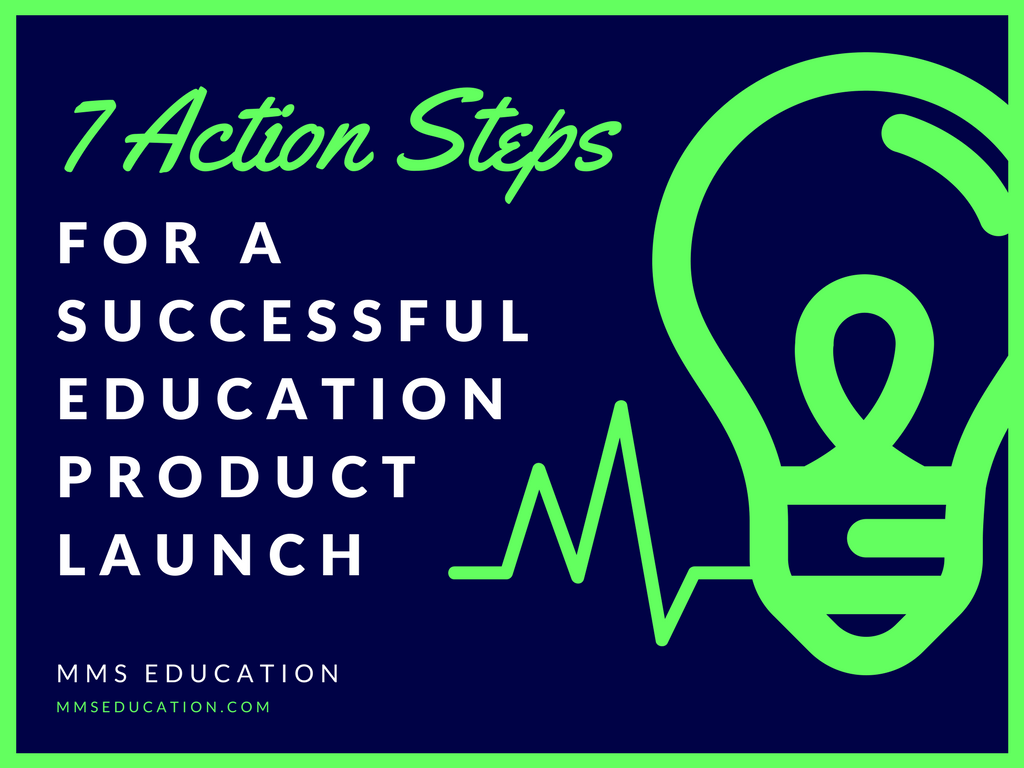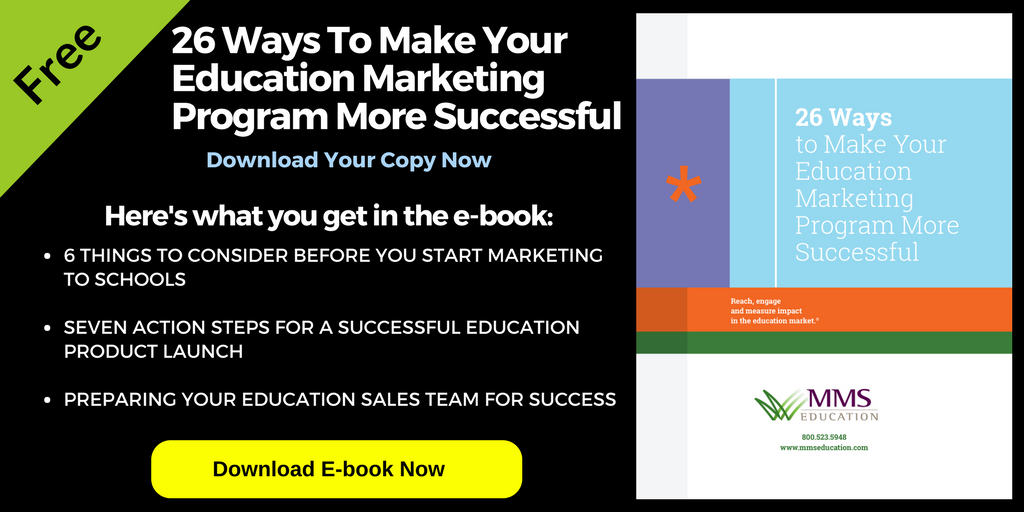 Selling educational products into the Pre K-12 market can be a daunting challenge. However, developing insight and knowledge about this sector can help avoid missteps along the way. Companies entering the market for the first time or even coming back in with a new product or program need to understand or be reminded of key elements of the education market that cannot be changed, avoided, or even ignored. They should also understand their own solution inside and out before starting the process. Fortunately, there are useful resources available to companies and nonprofits designed to expand awareness for a more successful product introduction
Selling educational products into the Pre K-12 market can be a daunting challenge. However, developing insight and knowledge about this sector can help avoid missteps along the way. Companies entering the market for the first time or even coming back in with a new product or program need to understand or be reminded of key elements of the education market that cannot be changed, avoided, or even ignored. They should also understand their own solution inside and out before starting the process. Fortunately, there are useful resources available to companies and nonprofits designed to expand awareness for a more successful product introduction
Here is a helpful list of 7 action steps that can strengthen how you sell educational products:
1) Know your customer. When beginning to plan a marketing campaign for your product, consider who will actually be using it and where. Deconstruct your ideal customer to better understand the intended market.
-
- Who is the end user of your product? Who is the purchaser? Administrator, teacher, student, or parent?
-
- Where? District level, school building (type of school, grade level), classroom, library/media center, computer lab, or home?
-
- What is the level of purchasing or decision making? State, district, building, classroom, teacher, parent, or student?
-
- Evaluate your customer by role and title. Decision maker, influencer, user (teacher), purchaser, or consumer (student)?
-
- Build a “primary” customer profile. What are the demographics of your best customer? Include demographics of district/building including size, technology level, funding requirements/sources, type of technology (iPad, Android, Chromebooks), and special characteristics.
- Use data to build targeted marketing and sales plans. Don’t try to cover geography; stay focused until conception and purchasing are proven successful.
2) Know your competitors. Before engaging with the education market, identify and evaluate all of your contenders.
- Competitors.
- Consider all products and programs, including free and OER (open education resources).
- Know products along with sales and marketing strategies.
- Gain insight into the competitor’s market share and installed customer base.
- Understand product and program pricing.
- What are your important competitive advantages, if any?
- Conduct competitive scans.
-
- Identify 6 to 8 competitors.
- Select 8 to 10 attributes and create a matrix/chart to contrast and compare.
- Use research with targeted prospects (online surveys, in-depth telephone surveys, focus groups) to know product satisfaction, allegiances, or areas of discontent.
-
- Know product differences, strengths, and weaknesses.
- Evaluate features and benefits. Feature = tangible component of product or “the what.” Benefit = how it improves customer’s life or “the why.” Remember that benefits are key to how you sell educational products!
3) Differentiate your solution. Make sure you can distinguish your product from the competition.
- Questions to ask:
-
- What problem(s) are you solving?
-
- Why is your solution better than others?
-
- What’s your S.U.D. factor? (What makes you Singular, Unique and Different?)
-
- What is your “only” factor?
- What is your competitive advantage?
- Competitive advantage should be specific, meaningful, and valuable. No cliches. Examples include:
-
- 93.5% of all our customers for ABC Reading renewed for the 2014-215 school year.
- 93.5% of our customers rate our customer service as exceptional.
4) Understand the Pre K-12 environment. Be prepared by gaining knowledge about the education sector before marketing processes begin.
-
- Technology infrastructure. Do the districts have the technology infrastructure needed to support your product or program? Only 40% of districts reported they had enough bandwidth to meet assessment requirements for high stakes testing in 2015.
-
- Equipment/devices. Does your product work on all devices and with all browsers? Products need to work on multiple devices including desktops, mobile, and tablets as well as different browsers like Chrome, Firefox, and Safari.
-
- Classroom bell schedule.
-
- Educator’s time limitations.
-
- Curriculum requirements.
-
- Standards. Federal, state, college and career ready, Common Core, Next Generation Science Standards, and C3 Framework for Social Studies Standards.
- Implementation:
- Difficulty/ease with which to integrate a technology program with the school’s infrastructure.
- Difficulty/ease of administration/teachers/students training.
- Accountability:
-
- Pressure on educators to perform and deliver.
- Teacher evaluations based on student test scores.
- Scalability:
-
- Seasonal peaks.
- Multiple users/multiple log-ons at the same time.
- Interoperability:
-
- Single sign-on.
-
- Data interoperability and standards.
-
- Common Education Data Standards (CEDS).
-
- Ed-Fi Alliance.
-
- Experience APR (xAPI).
- Learning Resource Metadata Initiative.
5) Develop a marketing and sales plan. Educational products and programs do not sell themselves.
- Create a successful marketing campaign:
-
-
- Plan and invest in marketing and sales initiatives.
-
- Test marketing strategy/concept first, before rolling out nationally.
- Minimum tools and materials needed include effective website, basic collateral sales sheet (PDFs), case studies or success stories, free demos, webinars, and full coordination of both marketing and sales efforts.
-
6) Stay current on new developments. To stay ahead of the curve, be aware of this ever-changing environment.
- Things to monitor:
-
- Federal, state, and local laws. For example, if your program uses student data, anyone with access to that data will need to pass security background checks and for some states, go through higher level security checks, including fingerprinting.
-
- Security requirements about student data like gathering, keeping, managing, and using personally identifiable information.
- Become knowledgeable about FERPA (Family Educational Rights and Privacy Act), COPPA (Children’s Online Privacy Protection Act), and CIPA ( Children’s Internet Protection Act).
7) Manage to the school calendar. Timing is everything when it comes to the education market. Most states have a fiscal year of July 1 to June 30, while the Federal government has from October 1 to September 30. Missing out on key times for marketing, selling, or product introductions could mean waiting an entire year or losing the sale altogether.
8) BONUS TIP: Treat your customers like gold. Fostering positive customer relationships remains a key aspect of any marketing journey. What you can do:
-
- Establish your company in global online communities to promote transparency and information sharing.
-
- Encourage user engagement and utilization.
-
- High utilization rate = high renewal rate.
-
- Maintain CRM systems and customer databases.
- Education customers are very loyal (90%+ renewal rate is not uncommon with a high utilization rate).
Crafting the perfect marketing and sales strategy begins with due diligence and an overall grasp of the Pre K-12 education market. Strongly developed action steps is how a company can successfully sell educational products.
MMS Education helps nonprofit and for-profit companies and organizations sell educational products to the PreK-12 education market.
Why do so many of the country’s Fortune 500 companies, corporate foundations, technology companies, government organizations, and education companies choose MMS Education as their partner?
Clients choose MMS Education because of our deep understanding of the education market, backed by nearly 40 years of working with schools, systems, administrators, and agencies.
Most importantly, we embrace your mission and deliver on time and on budget, whether you’re outsourcing one specific project or need a complete turnkey operation.
Call us today at 800.523.5948 or fill out this form to see how MMS Education can help you reach, engage, and measure impact in the PreK-12 education market.

